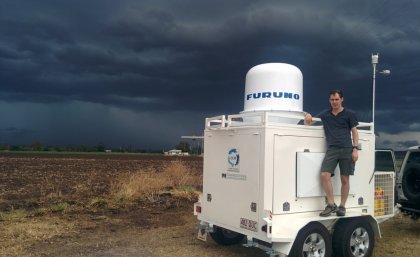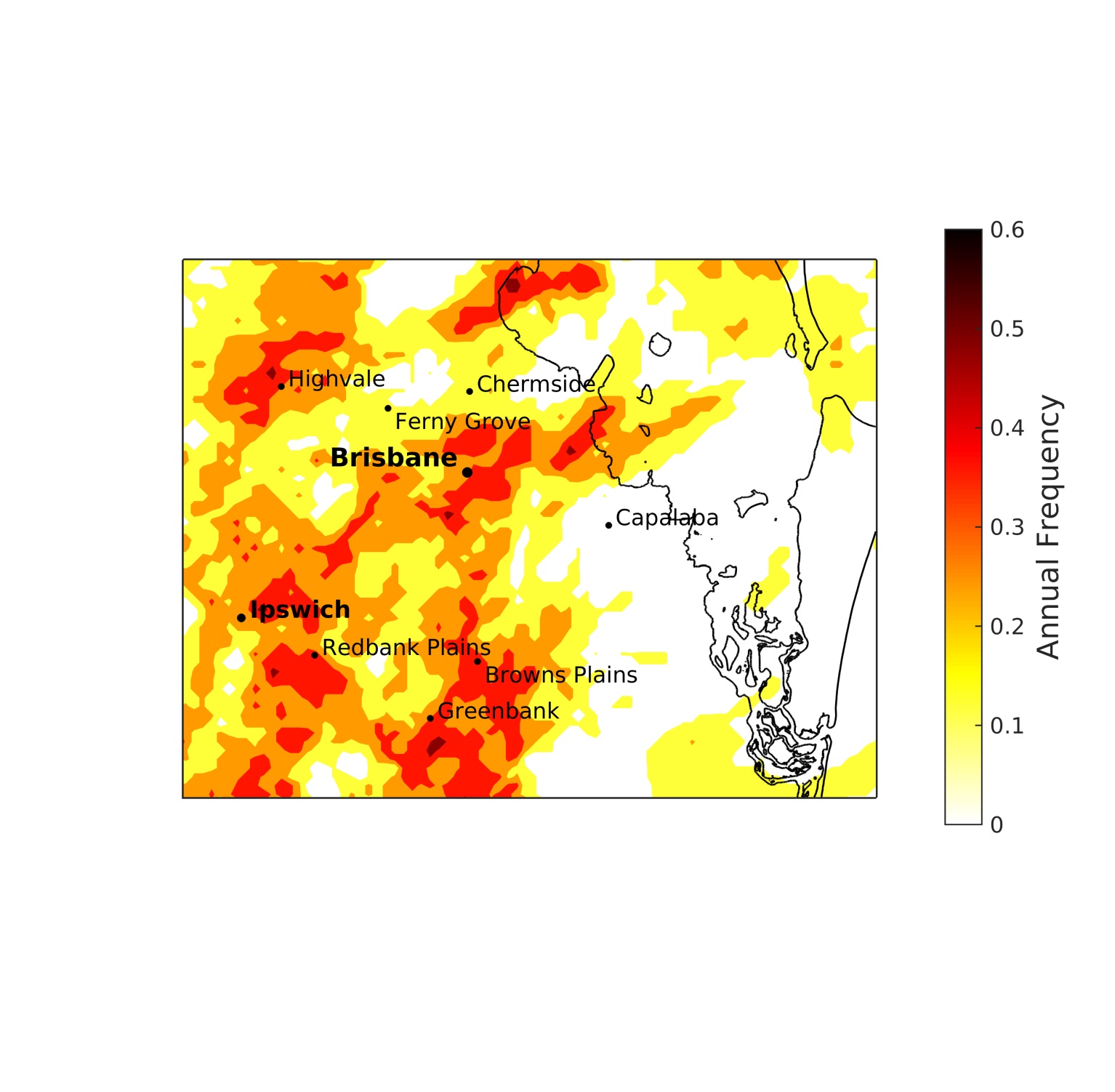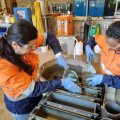
A University of Queensland study has identified Springfield, Ipswich, Boonah, Beaudesert, Esk and Jimboomba as some of south-east Queensland’s most intense areas of thunderstorm activity.
Dr Joshua Soderholm of UQ’s Climate Research Group used historical data from Bureau of Meteorology radars over 19 years, combined with a two-year field campaign and observations from weather stations to develop a thunderstorm map highlighting the most and least affected areas.
“The corridor south-west of Brisbane is a hotspot for intense summer storms,” said Dr Soderholm, who graduated last week with a PhD from the School of Geography, Planning and Environmental Management.
“The frequency drops off in Brisbane’s northern and south-eastern suburbs. Chermside and Capalaba are good places to live if you don’t like thunderstorms.”
Dr Soderholm’s research shows that south-east Queensland thunderstorms commonly arise in two areas: first in the Boonah-Beaudesert region, extending along the south-west corridor; and second around Esk, with storms extending to the Sunshine Coast.
 “Hailstorms are most common in Brisbane when sea breezes and a cool south-easterly change are moving through the region,” he said.
“Hailstorms are most common in Brisbane when sea breezes and a cool south-easterly change are moving through the region,” he said.
“The city of Brisbane ‘urban heat island’ accelerates the sea breeze, leading to increased moisture over the city, providing a hot and humid environment that is favourable for feeding storms.
“The most optimal storm conditions for Brisbane are also associated with a deep layer of warm, moist air from agriculture out west moving eastwards over the coast.”
Dr Soderholm said Brisbane’s most significant hailstorms were “severe multicells”, which were more common in the SEQ region than supercells
“These are thunderstorms comprised of multiple severe cells,” he said.
“Different cells dissipate as new cells form to continue the life of the thunderstorm.”
Frequent thunderstorm activity over western south-east Queensland was often associated with sea breeze activity providing additional lift and moisture.
“The sea breezes combine with hot air from western agricultural regions in layers, much like the layers of a cake, leading to a very favourable atmosphere for storms over the coast,” Dr Soderholm said.
Dr Soderholm’s field research included Australia’s first mobile weather radar, weather balloons and quadcopters to get close to storms and collect data, to provide a more accurate understanding of south-east Queensland thunderstorms.
“We measured storms in as much detail as possible to understand what was happening and to help people in the affected regions prepare for dangerous storms,” he said.
Dr Soderholm said the El Niño–Southern Oscillation (ENSO) climate state of the tropical Pacific Ocean provided a useful seasonal (three month) predictor of hailstorm activity for south-east Queensland.
“Most climate models indicate these temperatures will remain in the neutral range throughout the southern summer and autumn, which means there is little sign of an El Niño or La Niña developing in the coming months and a near-average number (22) of hailstorms days this storm season,” he said.
Dr Soderholm said high-impact thunderstorms (for example, the 27 November 2014 Brisbane hailstorm) were more common than people believed historically, but were highly variable with many years between events.
He is working with the insurance industry and the remote sensing sector and hopes to expand his postdoctoral studies to other Australian regions, including Sydney.
Professor Hamish McGowan (UQ), Dr Harald Richter (Bureau of Meteorology) and Associate Professor Kevin Walsh (University of Melbourne) supervised Dr Soderholm’s PhD.
His research was supported by the UQ Climate Research Group, School of GPEM, Fugro ROAMES and the Australian Bureau of Meteorology.
Media: Dr Joshua Soderholm, j.soderholm@uq.edu.au, 0403 800 655.
.jpg)










